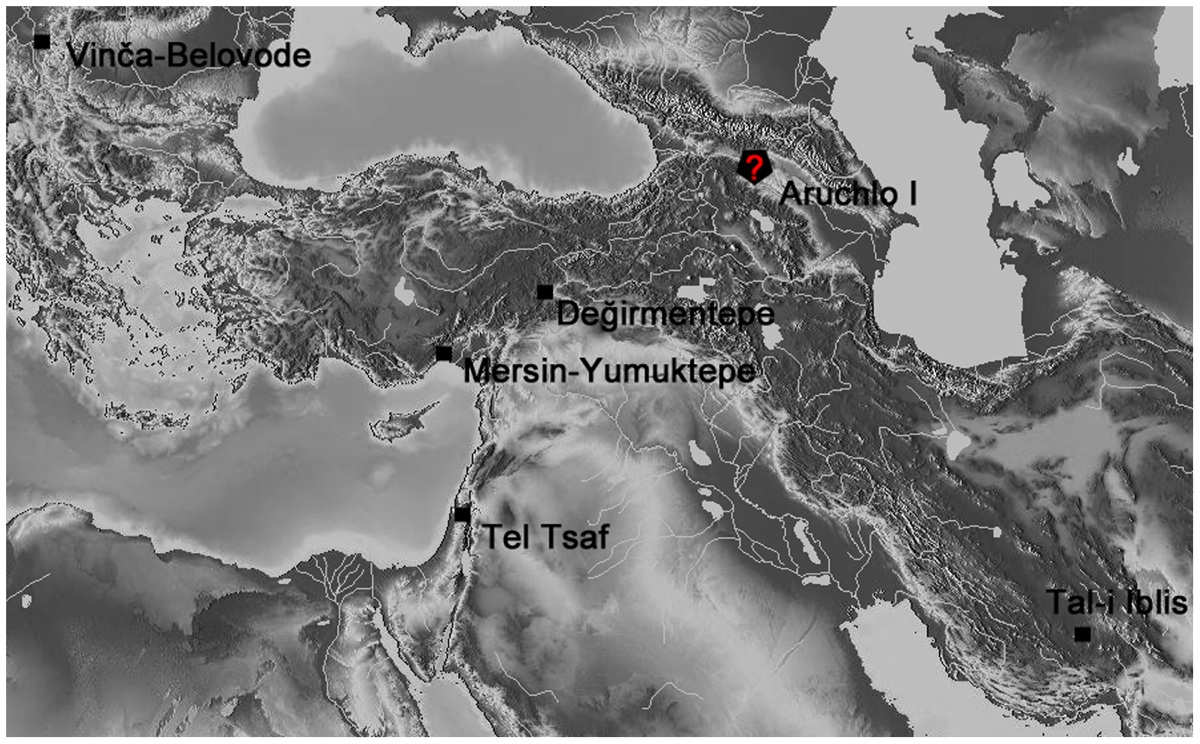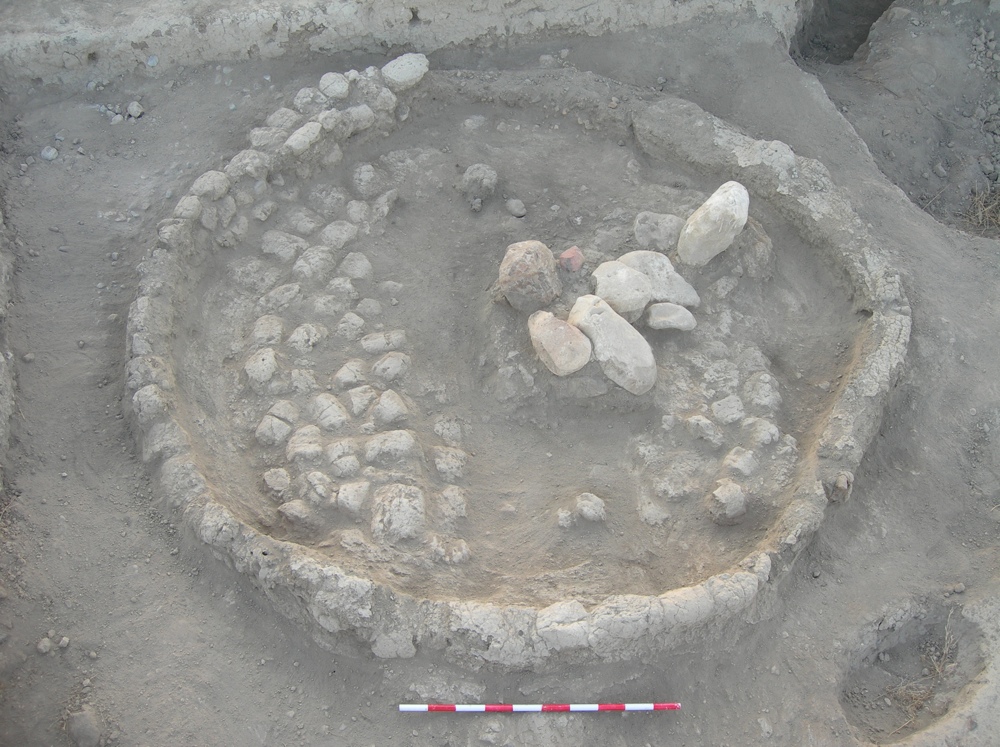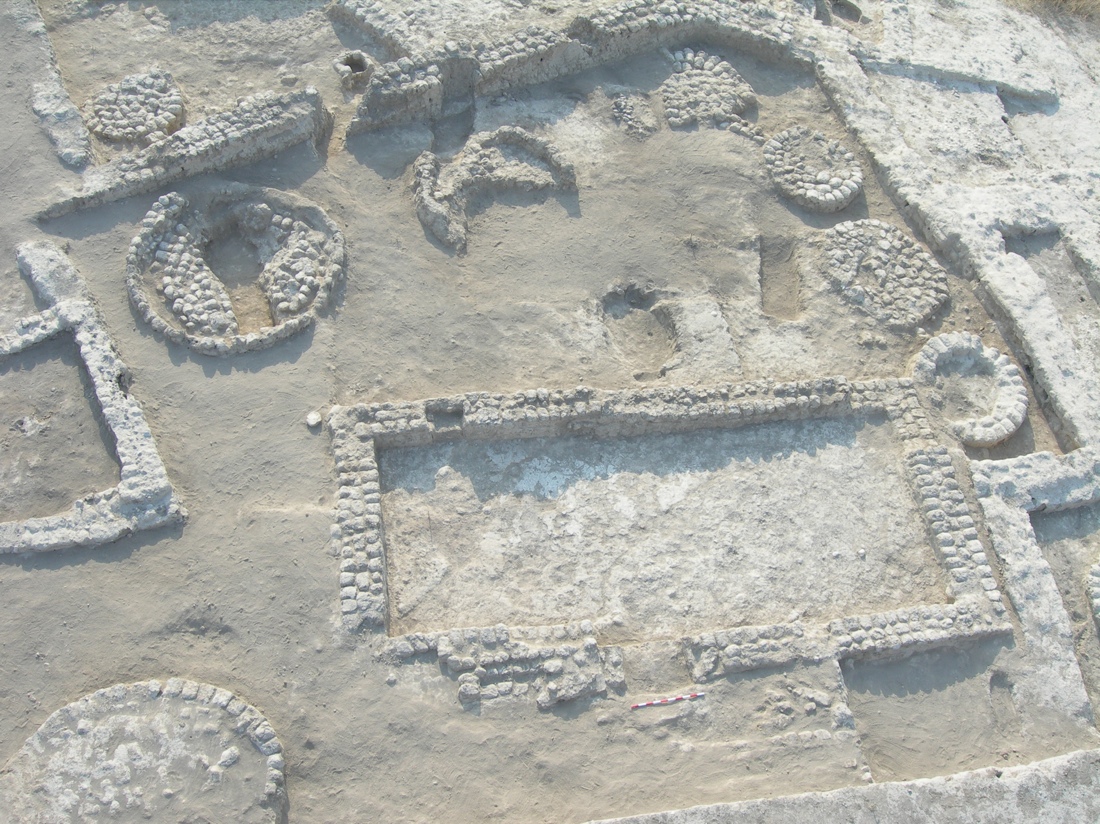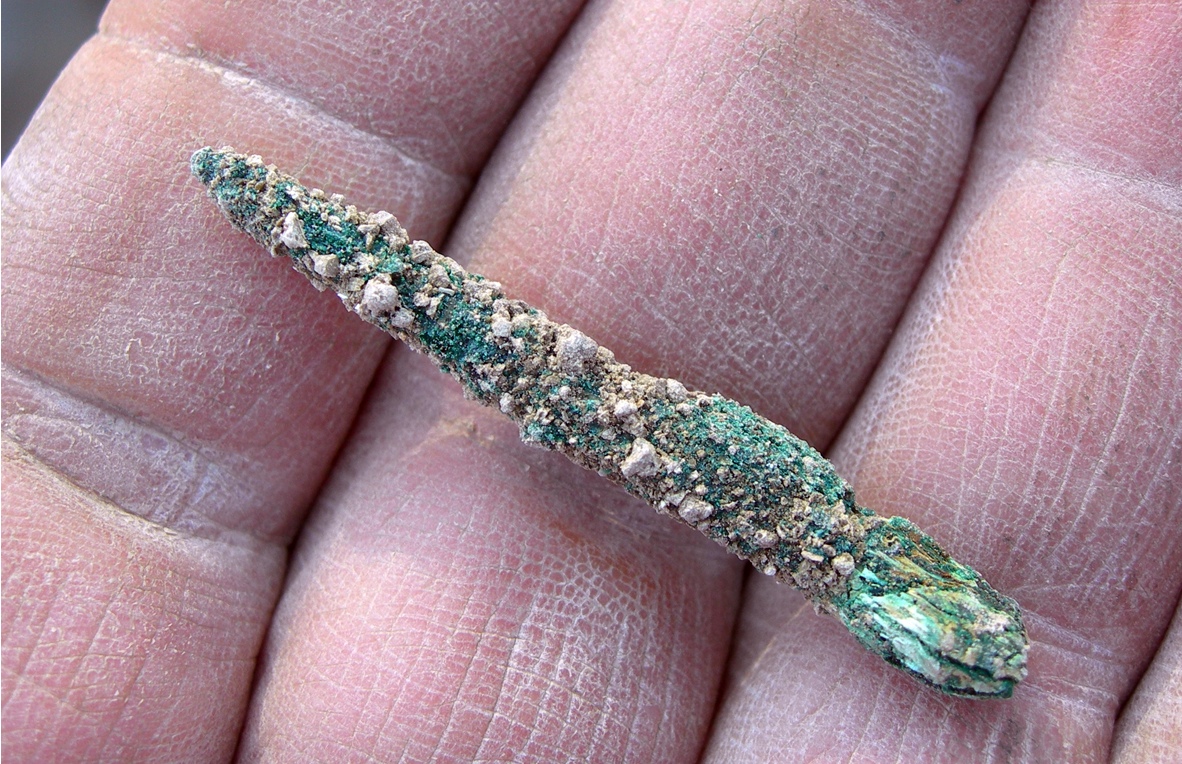Photos: Ancient Burial and Metal Tool from Southern Levant
Tel Tsaf

Between 2004 and 2007, archaeologists excavated a site in Tel Tsaf in the Jordan Valley of Israel, finding evidence for a Late Byzantine-Early Islamic occupation, including a settlement that dated to 5100 B.C. to 4600 B.C. A complex found at the site included courtyard buildings, with rectilinear, rounded rooms and silos, and cooking areas. They also uncovered four burials, two of which were discovered inside two silos, and a metal awl tool that may be the oldest metal object every found in the Middle East. The findings are described online March 16, 2014, in the journal PLOS ONE. [Read full story]
Rounded Silo

The tool, a metal awl, was found inside a grave tucked into one of the two silos, a rounded structure dubbed Silo C339 and shown here with large stones at its center, in the northeast corner of the courtyard. At this stage of excavation of the ancient settlement, the burial had not yet been uncovered. [Read full story]
Ancient Bones

The skeleton, shown here, of a possibly 40-year-old female was also found inside the grave (within Silo C339), which was oriented in the north-south direction with the skeleton in the south. A necklace with 1,668 ostrich eggshell beads was found arranged in six rows on the front part of the woman's pelvis. [Read full story]

Here, a general view of the courtyard building found at the Tel Tsaf archaeological site, with one of the silos (the one that included the skeleton of a 40-year-old woman), shown in the upper left corner. At this stage of excavation, the burial had not yet been uncovered. [Read full story]
Metal Awl

The copper awl — about 1.6 in. long, 0.2 inches (5 mm) wide at its base, and 0.03 inches (1 mm) at its tip — was set in a wooden handle. Analyses of the corroded awl suggest it was imported from 620 miles (1,000 kilometers) away in the Caucasus region. The awl was likely buried as a grave good with the woman. [Read full story]
Get the world’s most fascinating discoveries delivered straight to your inbox.
Jeanna Bryner is managing editor of Scientific American. Previously she was editor in chief of Live Science and, prior to that, an editor at Scholastic's Science World magazine. Bryner has an English degree from Salisbury University, a master's degree in biogeochemistry and environmental sciences from the University of Maryland and a graduate science journalism degree from New York University. She has worked as a biologist in Florida, where she monitored wetlands and did field surveys for endangered species, including the gorgeous Florida Scrub Jay. She also received an ocean sciences journalism fellowship from the Woods Hole Oceanographic Institution. She is a firm believer that science is for everyone and that just about everything can be viewed through the lens of science.


